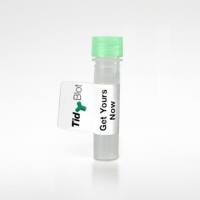A method has been developed for the extraction of intact proteins from SDS-PAGE gels and for subsequent MALDI-TOF MS analysis to determine precise molecular mass. The method consists of an electroelution step and a subsequent low-temperature matrix-analyte cocrystallization step prior to MALDI-TOF MS. Proteins were first extracted from polyacrylamide gels using electroelution (ProteoPLUS™). Following electroelution, salts, SDS, and dye were removed by dialysis using the same electroelution tubes. The proteins were then concentrated in a vacuum centrifuge. Using bovine serum albumin (BSA) and phosphorylase B (Phos B) as standards, it was found that electroelution was more effective than passive elution in extracting intact proteins from gels. Optimized protein recoveries were determined to be 89% for BSA and 58% for Phos B, supporting the hypothesis of an inverse relationship between recovery and protein size. The traditional practice of “fixing gels” using methanol and acetic acid was found to reduce protein recoveries significantly and should be avoided if possible. A subsequent sample preparation method involving the low-temperature cocrystallization of whole proteins with MALDI matrices (trans-3,5-dimethoxy-4-hydroxycinnamic acid, sinapinic acid, 10 mg/mL) was also developed to remove residual impurities further. Proteins and MALDI matrices were mixed, sealed, and stored at 4�C to allow for overnight cocrystallization of matrix and protein. The supernatant was removed and protein-matrix crystals redissolved using the same matrix solution. MALDI-TOF MS signal intensities were found to increase three- to fourfold using the low-temperature cocrystallization method relative to the more common method of immediate analysis following matrix-analyte mixing and “dried droplet” deposition. The reported method is illustrated using two β-1,3-endoglucanase isoforms from wheat apoplast extracts.






